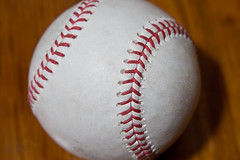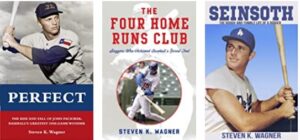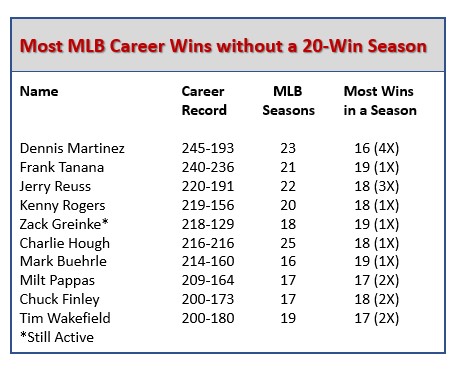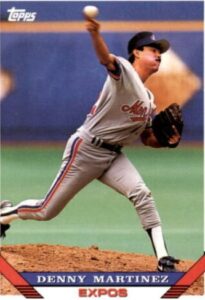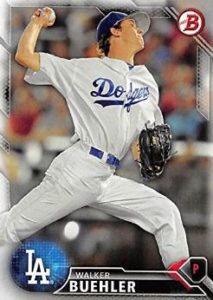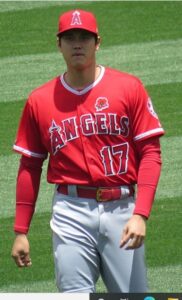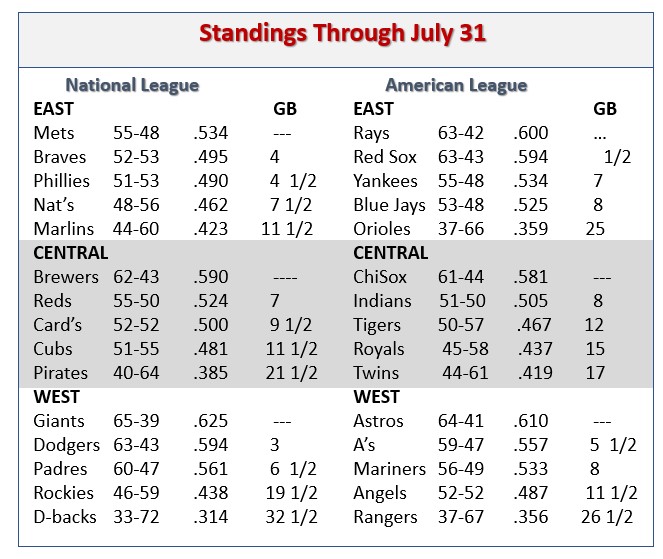Felipe – Matty – Jesus … The Anti-Carlton Gene
If you were putting together a lineup to face off against Hall of Fame southpaw Steve Carlton, placing the Alou family across the outfield might be a good place to start. In 135 at bats against Carlton, Felipe, Jesus and Matty Alou hit a combined .400 (54-for-135). Individually, Jesus hit .436, Felipe hit .421 and Matty a miserly .333.
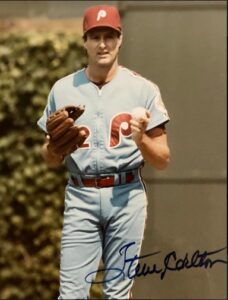 In this post, the 14th in the Baseball Roundtable “Who’s Your Daddy?” series, we’ll look at a Baseball Roundtable-selected lineup that performed exceptionally well against Steve Carlton over their careers. You might be surprise to find that none of the Alou brothers made the starting nine and Ron Gardenhire came close. More on that later, but first a look at what “Who’s Your Daddy?” is all about.
In this post, the 14th in the Baseball Roundtable “Who’s Your Daddy?” series, we’ll look at a Baseball Roundtable-selected lineup that performed exceptionally well against Steve Carlton over their careers. You might be surprise to find that none of the Alou brothers made the starting nine and Ron Gardenhire came close. More on that later, but first a look at what “Who’s Your Daddy?” is all about.
Who’s Your Daddy – A Baseball Roundtable Series
In this series, BBRT presents lineups of players who performed unexpectedly well against baseball’s top pitchers. (An explanation of the inspiration behind the Who’s Your Daddy? series can be found the end of this post.) As always, I would stress that the pitchers included in the Who’s Your Daddy? series are among the “best in the business.” They are selected not because of the players who performed well against them, but rather because success among hitters when they were on the mound was the exception rather than the rule. We’ve looked at pitchers from a wide range of eras – from Bob Feller to Nolan Ryan to Max Scherzer. As noted, in this post, we’re looking at one of MLB’s all-time great southpaws, Steve Carlton.
Before we get started on this edition, here are links to the previous editions of this series. Please note: For still active pitchers, the stats are as they stood on the date of the post.
- Nolan Ryan, click here.
- Sandy Koufax, click here.
- Pedro Martinez, click here.
- Bob Gibson, click here.
- Randy Johnson, click here.
- Greg Maddux, click here.
- Justin Verlander, click here.
- Bob Feller, click here.
- Roger Clemens, click here.
- Max Scherzer, click here.
- Tom Seaver, click here.
- Mariano Rivera, click here.
- Warren Spahn, click here.
- For Lefty Grove, click here.
Lefty (Carlton) was a craftsman, an artist. He was a perfectionist. Stroke, stroke, stroke and when he got through (pitching a game), it was a masterpiece.
Hall of Famer Richie Ashburn
Carlton does not pitch to the hitter, he pitches through him. The batter hardly exists for Steve. He’s playing an elevated game of catch.
Tim McCarver
Let’s start with a look at Carlton’s credentials. Carlton’s Hall of Fame MLB career spanned 24 seasons (1965-88) … primarily with the Phillies (15 seasons) and Cardinals (seven seasons). He also played briefly, at the end of his career, with the Giants, White Sox and Twins. He won 329 games (11th all-time and second all-time among left-handers) against 244 losses. His 4,136 strikeouts are fourth among MLB pitchers and second among lefties. Carlton was a ten-time all Star and four-time Cy Young Award winner. He won 20 or more games in a season six times, leading the NL in wins four times. He led the league in ERA once, complete games three times, shutouts once, innings pitched five times and strikeouts five times.
A Balancing Act
Steve Carlton racked up MLB’s fourth-most career strikeouts (4,136); and the second-most career walks (1,833). Carlton also had the most career pick-offs (144); and the most career balks (90). In addition, he led the NL in wins in four seasons; and led in losses twice.
_______________________________________________________
1972 – One for the Ages
In 1972, Steve Carlton delivered one of the most dominating seasons ever. Pitching for the last-pace Philadelphia Phillies – a team that finished with a 59-97 won-lost record – Carlton led MLB with 27 wins (ten losses) and topped MLB with 30 complete games, while also posting the NL’s lowest earned run average (1.97) and leading the NL in strikeouts (310), games started (41) and innings pitched (346 1/3). From June 7 through August 17 of that season, Carlton started 18 games – going 15-0 (the team won 17 of those 18 starts), with a 1.51 ERA, 14 complete games and five shutouts. In games Carlton didn’t start during that span, the Phillies went 9-39. Carlton’s 1972 performance earned him the unanimous selection as the NL Cy Young Award winner – and he is still the only pitcher ever to win the CYA while pitching for a last-p[lace team. It was indeed a season for the ages.
_______________________________________________________________________
Now, let’s look at the lineup of players who showed they could acquit themselves well against Carlton’s overpowering arsenal. A couple of notes here. As I evaluated hitters (against Carlton), I looked not just at hits or average, but the productivity of those hits (RBI, extra-base hits). I also looked at such factors as plate appearances against Carlton (the bigger the sample size, the stronger the evidence), strikeouts-to-walks ratio and at what point in Carlton’s career the hits were put on the board. Through his age-39 season, for example, Carlton was 313-107, with a 3.04 ERA, while in the three seasons after turning age 40, he went 16-37, 5.21. With that in mind, I adjusted the value of offensive damage done in Carlton’s final three seasons. (Only regular-season stats are included.) As usual, I expect the choices here to be the subject of discussion and debate, but aren’t discussion and debate a great part of being a fan of the national pastime?
—-BASEBALL ROUNDTABLE “WHO’S YOUR DADDY?” STEVE CARLTON LINEUP—–
Catcher … Johnny Bench – 12 homes run and 30 RBI
Johnny Bench hit more home runs (12) and drove in more runs (30) against Steve Carlton than any other player. Notably, those were also Bench’s highest total in home runs and RBI against any pitcher over his own career. (He also hit 12 career long balls against Don Sutton.) Bench hit .300 or better versus Carlton in nine of the 16 season he faced him. His best season against Carlton was 1970, when he hit .500 (6-for-12), with three home runs and seven RBI in four games.
Two-for-Three
Johnny Bench hit three home runs in a game against Steve Carlton – TWICE. On July 26, 1970, Bench hit a three-run homer off Carlton in the first inning, a two-run shot in the second and a solo home run in the fifth – as the Reds topped Carlton and the Cardinals 12-5. On May 9, 1973, Bench touched Carlton for a two-run homer in the first inning; a three-run shot in the third; and a another two-run homer in the seventh – as the Reds defeated the Phillies 9-7. Bench had three three-home run games in his career.
In a 17-season Hall of Fame career (1967-83, Reds), Bench hit .267, with 389 home runs and 1,376 RBI. He was the 1968 NL Rookie of the Year, an All Star in 14 seasons, a two-time MVP and ten-time Gold Glover. He twice led the NL home runs and three times led in RBI.
Catcher Honorable Mentions: Gary Carter, .309-11-23 in 39 games versus Carlton; with 17 walks versus seven whiffs. Cliff Johnson, 14 walks in 12 games versus Carlton, which turned a .250 average (six-for-24) into a .526 on-base percentage.
I Just Can’t Figure this Guy Out
Catcher Mikey Ryan hit just .193 over his 11-season MLB career (1964-74 …. Phillies, Red Sox, Pirates), and he clearly had trouble with Steve Carlton. He was 0-for-26 in his career against Carlton (he did draw three walks) – the most at bats of any player with a .000 average versus Carlton. Surprisingly, Ryan did put the ball in play, fanning just four times in those 26 at bats.
First Base … Keith Hernandez – 44 hits and a .321 average
 No one collected more career hits against Steve Carlton than Keith Hernandez’ 44 safeties (.321 average). Hernandez also collected more hits off Carlton than he did against any other pitcher. Hernandez’ 11 doubles were also the most two-baggers hit off Carlton by any batter. Earlier, I noted that Carlton’s ERA was 3.04 before his fortieth birthday and 5.21 in the three seasons he played after turning forty. I found in interesting that Hernandez did his damage before Carlton reached forty. Hernandez hit .352-2-11 against Carlton before his age-40 season and was just 1-for-15 after. In 1980 – when Carlton won his third Cy Young Award – Hernandez hit him at a .368 pace (7-for-19) and a .500 on-base percentage (five walks/two whiffs). Still, little damage was done (he did not have an RBI versus Carlton that season).
No one collected more career hits against Steve Carlton than Keith Hernandez’ 44 safeties (.321 average). Hernandez also collected more hits off Carlton than he did against any other pitcher. Hernandez’ 11 doubles were also the most two-baggers hit off Carlton by any batter. Earlier, I noted that Carlton’s ERA was 3.04 before his fortieth birthday and 5.21 in the three seasons he played after turning forty. I found in interesting that Hernandez did his damage before Carlton reached forty. Hernandez hit .352-2-11 against Carlton before his age-40 season and was just 1-for-15 after. In 1980 – when Carlton won his third Cy Young Award – Hernandez hit him at a .368 pace (7-for-19) and a .500 on-base percentage (five walks/two whiffs). Still, little damage was done (he did not have an RBI versus Carlton that season).
I’m Keith Hernandez
Keith Hernandez appeared in the last episode of Seinfeld, where his key line was “I’m Keith Hernandez,” which later became the title of his best-selling memoir.
Keith Hernandez played 17 MLB seasons (1974-90 … Cardinals, Mets, Indians), hitting .296, with 162 home runs and 1,071 RBI. He was the 1979 NL MVP (Cardinals), when he won the batting title (.344) and led the NL in doubles (48 ) and runs scored (116). He was an All Star in five seasons an 11-time Gold Glover.
Second Base … Tommy Helms – 23 games, 65 plate appearances, not a single strikeout
Putting the Ball in Play
Tommy Helms 65 plate appearances without a strikeout against Steve Carlton are the most career PA’s against Carlton of any hitter who never fell victim to a Carlton “K.”
Tommy Helms got off to a good start against Steve Carlton, two singles and a double in his first three plate appearances against him. He went on to put the ball in play often (and effectively) putting up a .317 average (with one home run and seven RBI) over 23 games.
Tommy Helms played in 14 MLB seasons (1964-77 … Reds, Astros, Pirates, Red Sox). He was a career .269 hitter, with 34 home runs and 477 RBI (1,435 games). He was the 1966 NL Rookie of the Year (Reds), when he hit .284-9-49 in 138 games. He was a two-time All Star and two-time Gold Glover.
Second Base Honorable Mentions: Steve Sax, who hit .423 against Carlton in 26 at bats (an average second only to Jesus Alou among players with at least 20 career at bats against Lefty). The smaller sample size, and the fact that he had only one extra-base hit and and just three RBI, puts him behind Helms in this lineup. Davey Lopes, a career .263 hitter, raked at a .382 pace against Carlton in 55 at bats (.433 on-base percentage), with one home run and five RBI.
Third Base … Ray Knight – .356 average with 20 RBI
Ray Knight hit Steve Carlton at a .356 clip over 30 games. His 31 hits are the 13th most against Carlton and his 20 RBI rank fifth. He batted against Carlton in ten MLB seasons and hit .350 or better against the southpaw in five (.400 or better in four). He hit the second-most career triples against Carlton (3). Thirteen of his 31 hits versus Carlton went for extra buses, giving him a .632 slugging percentage, sixth-highest among players with at least 20 at bats against Carlton.
Oops – For the Win
Ray Knight scored the famous (or infamous) winning run in the tenth inning of Game Six of the 1986 World Series (as the Mets edged the Red Sox 6-5). Knight, who had singled and moved to second on a wild pitch, scored as Mookie Wilson’s ground ball went between the legs of Red Sox’ 1B Bill Buckner.
Knight played 13 MLB seasons (1974, 1977-88 … Reds, Astros, Mets, Orioles, Tigers), primarily as a corner infielder. The two-time All Star hit .271-84-595 in 1,495 games. His best season was 1979, when he hit .318-10-79 for the Reds.
Third Base Honorable Mention: Ken Reitz’ 36 hits were the sixth-most against Carlton, however, his .286 career average, eight extra-base this and 13 RBI all trailed Knight (who had 35 fewer at bats against Carlton than Reitz).
Shortstop …. Tim Foli – 36 hits, .295 average.
Tim Foli’s 36 hits are tied for the sixth-most against Carlton, He was especially strong against Lefty in 1978, when he went 7-for-ten (.700), with one double and two RBI He also drew six career walks off Carlton, while only fanning seven times in 131 plate appearances. Foli’s 36 career hits against Carlton are the most he had against any MLB pitcher.
Tim Foli played 16 MLB seasons (Mets, Expos, Giants, Pirates, Angels, Yankees). He was a .251 career hitter, with 25 home runs and 501 RBI.
It’s Been a Hard Day’s Night
The Expos’ Tim Foli is the only player to start a cycle one day and complete it the next. On April 21, 1976, Foli collected a single, double and triple in a contest against the Cubs that was suspended (pre-Wrigley lights) in the top of the seventh due to darkness. When play resumed the following day, Foli added an eighth-inning home run. (The Expos prevailed 12-6.)
Shortstop Honorable Mentions: It’s nice to have a surprise on this list (especially one with Minnesota Twins ties). Therefore, Ron Gardenhire gets a shout out. In nine games against Carlton, Gardenhire went 11-for-30 – a .367 average that ranks 14th among batters with at least 20 career at bats against Carlton. In his first four games against Carlton, Gardenhire batted in the eight-hole, but apparently showed something. In his final five starts against Carlton, he batted lead off twice, second once and in the eight-spot once. He didn’t do a lot of damage with those safeties – one home run, one RBI. So why is he a surprise? Gardenhire played in five MLB seasons (1981-85), all with the Mets. He hit .232-4-49 in 285 games (and swiped 13 bases) – but he apparently had Steve Carlton’s number. Gary Templeton only hit .261 against Steve Carlton during his career, but he made those hits count, his fourteen RBI are the 17th most against Carlton and his seven doubles place tenth.
Outfield … Henry Aaron – .343 with six home runs and 17 RBI
 Henry Aaron’s six home runs are the sixth-most against Carlton, while his 17 RBI are 11th, Add in a .343 average and the fact that he did that damage in just 73 at bats and Aaron leads this outfield. (Aaron had the fewest at bats against Carlton of any player with at least 15 RBI against him.) In 1971, Aaron had ten at bats in three games against Carlton and hit .500, with three home runs and 10 RBI. In 1972, Carlton’s sparking CYA season, Aaron again batted .500 against him (7-for-14).
Henry Aaron’s six home runs are the sixth-most against Carlton, while his 17 RBI are 11th, Add in a .343 average and the fact that he did that damage in just 73 at bats and Aaron leads this outfield. (Aaron had the fewest at bats against Carlton of any player with at least 15 RBI against him.) In 1971, Aaron had ten at bats in three games against Carlton and hit .500, with three home runs and 10 RBI. In 1972, Carlton’s sparking CYA season, Aaron again batted .500 against him (7-for-14).
Two is Company
Henry Aaron and Eddie Mathews hit more home runs while teammates (863) than any other pair of teammates in MLB history. Second place? Babe Ruth and Lou Gehrig at 859.
Aaron played 23 MLB seasons (1954-76 … Braves, Brewers) and hit .305, with 755 home runs, an MLB-record 2,297 RBI, 3,771 hits and 240 steals. He was an All Star in all but his first and final seasons, the 1957 NL MVP and a three-time Gold Glover. He led the NL in hits twice, runs three times, home runs four times, RBI four times, total bases eight times and batting average twice. There’s more, but you get the idea. No surprise he’s in this lineup.
Outfield … Rusty Staub 32 hits, 25 RBI
Rusty Staub hit .308 and drove in 25 runs in 34 regular-season games versus Steve Carlton. His 32 hits are 11th all-time against Carlton, while his 25 career RBI against the southpaw are second only to Johnny Bench (30). On May 30, 1972 – as Staub’s Mets topped Carlton and the Phillies 7-0 in NY – Staub touched Carlton for a two-run single in the first inning; an RBI single in the third; and a RBI single in the fifth. He added a double off reliever Wayne Twitchell in the seventh to complete a four-for-four day. In 12 campaigns against Carlton, Staub hit .300 or better six times.
Staub played 23 MLB seasons (1963-85 … Mets, Astros, Expos, Tigers, Rangers), hitting .279-292-1,466. He was a six-time All Star.
Spreading the Hits Around
Rusty Staub is the only MLB player to collect at least 500 hits for four different teams: Astros (792 hits); Mets (709); Tigers (582); and Expos (531). He had 2,716 total MLB safeties.
Outfield –Tie: Lee Lacy (.373 average, 32 hits) and Ellis Valentine (.404 average. .702 slugging percentage).
Lee Lacy’s 32 hits are 11th all-time against Carlton, his eight doubles are fifth, his four triples first and his .372 average eleventh among players with at least 20 career at bats against Carlton. Lacy first faced Carlton on July 11, 1972. Carlton pretty much handcuffed the Dodgers that day, throwing a five-hit, one-run complete game (one walk, eight whiffs) as his Phillies won 4-1. He didn’t seem to fool Lacy though, who collected three of the Angels’ five hits (in four at bats) out of the leadoff spot.
That was so Good, I’ll have Another
Lee Lacy recorded ten multi-hit games in the 29 contests in which he faced Steve Carlton.
Lacy played 16 MLB seasons (1971-87 … Dodgers, Pirates, Orioles, Braves), hitting a solid .286, with 91 home runs, 458 RBI and 185 steals. He played in at least 100 games in just nine of those sixteen seasons and his best season was 1984 (Pirates) when he went … .312-12-70, with 21 steals in 138 games (at age 36).
I couldn’t leave Ellis Valentine out of this lineup (maybe I’ll use a designated hitter). Valentine hit .404 versus Carlton (fourth-highest among player with at least 20 at bats versus the southpaw), with a lofty .702 slugging percentage (second-highest among the “at least 20 at bats” contingent.
Come to the Plate, Hit, Run – Repeat.
In 1977, Ellis Valentine had two triples, 25 home runs, 76 RBI and 13 stolen bases for the Expos. The following season, he had two triples, 25 home runs, 76 RBI and 13 stolen bases for the Expos.
Valentine suited up in 10 MLB seasons (1975-81, 1985 …. Expos, Mets, Angels, Rangers). He hit .278 (894 games), with 123 home runs and 474 RBI. The one-time All Star’s best season was 1977, when he went .293-25-76, with 13 steals for the Expos. Valentine’s 19 hits off Steve Carlton were the most hits he collected against any MLB pitcher.
Outfield Honorable Mentions: Jesus and Felipe Alou hit .426 and .421, respectively, against Steve Carlton – the highest and third-highest averages among players with at leas 20 at bats against the lefty. They didn’t end up with starting sports because – despite a combined 40 hits – they had just one home run and seven RBI.
A Walk in the Park _ Special Mention
Jim Wynn hit just .265 against Steve Carlton, but he walked thirty times in 100 plate appearance, to put up a .490 on base percentage. He fanned 15 times and five of his 18 hits (in 68 at bats) left the ball yard.
Pitcher – Lynn McGlothen – Two-for-three, with a walk
 Lynn McGlothen matched up against Carlton three times (1975, 1977, 1979). At the plate, he went two-for-three with a walk (one double, two RBI.). On the mound, McGlothen was 1-2, 2.79 with six walks and nine strikeouts (19 1/3 innings pitched) in games he matched up with Carlton. Carlton was 2-1, 5.51, with six walks and nine whiffs (16 1/3 innings pitched).
Lynn McGlothen matched up against Carlton three times (1975, 1977, 1979). At the plate, he went two-for-three with a walk (one double, two RBI.). On the mound, McGlothen was 1-2, 2.79 with six walks and nine strikeouts (19 1/3 innings pitched) in games he matched up with Carlton. Carlton was 2-1, 5.51, with six walks and nine whiffs (16 1/3 innings pitched).
McGlothen had an eleven-season MLB career (1971-82 … Cubs, Cardinals, Giants, Red Sox, Yankees, White Sox). He was 86-93, 3.98 on the mound and hit .173-0-25 in 456 at bats. He was an All Star (Cardinals) in 1974, when he went 16-12, 2.69 in 31 starts.
Primary Resource: Baseball-Reference.com
___________________________________
Who’s Your Daddy? The Inspiration.
On September 24, 2004, in the middle of a tight pennant race, the Yankees handed future Hall of Famer Pedro Martinez and the Boston Red Sox a tough 6-4 loss. Martinez went 7 1/3 innings giving up nine hits and five earned runs. The game came just five days after (in his previous start) Martinez had lasted just five frames against the Bronx Bombers (eight hits, eight earned runs) in a 16-7 loss.
After that second loss, Martinez candidly commented, “What can I say? I just tip my hat and call the Yankees my daddy.” Little did he know that his comment – and a Yankee fans’ chant of “Who’s your daddy?” would follow him into future starts in New York (all the way to his final MLB start – against the Yankees for the Phillies – in Game Six of the 2009 World Series).
The concept of “Who’s your daddy?” became the inspiration for Baseball Roundtable to take a look at the players who “had the number” of some of MLB’s premier pitchers. Again, you can find links to the previous “editions” of “Who’s Your Daddy?” near the top of this post.
_______________________________________
BASEBALL ROUNDTABLE ON THE TOP 100 BASEBALL BLOG LIST
 Baseball Roundtable is on the Feedspot list of the Top 100 Baseball Blogs. To see the full list, click here.
Baseball Roundtable is on the Feedspot list of the Top 100 Baseball Blogs. To see the full list, click here.
I tweet baseball @DavidBaseballRT
Follow/Like Baseball Roundtable’s Facebook Page here. More baseball commentary; blog post notifications; PRIZES.
Member: Society for American Baseball Research (SABR); The Baseball Reliquary; The Negro Leagues Baseball Museum.








